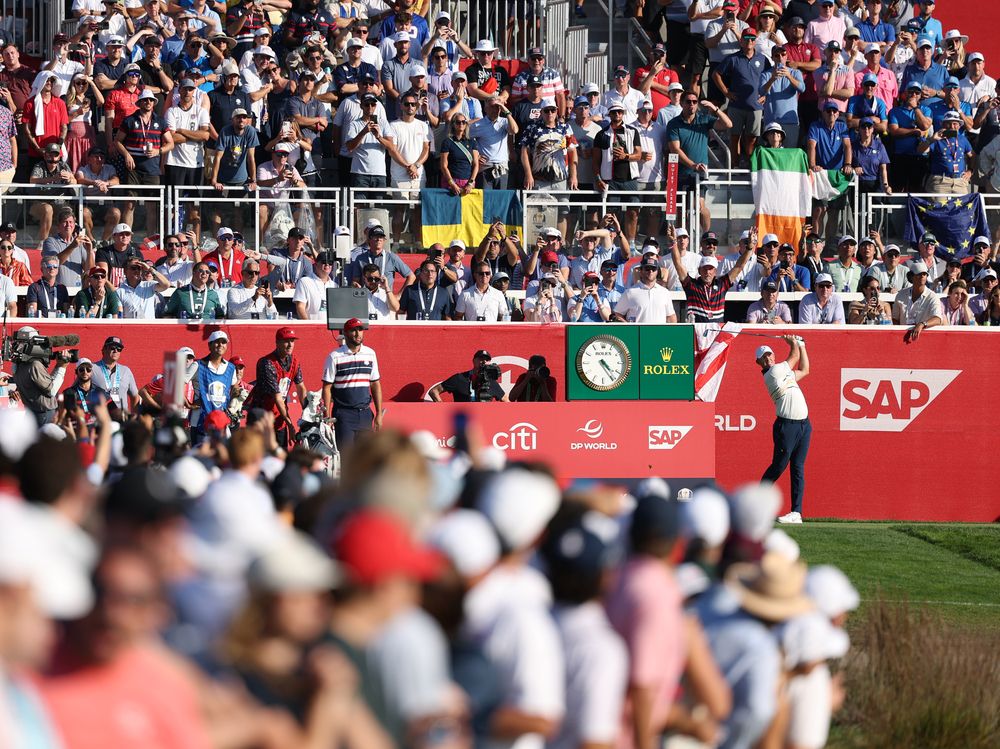The 2023 Ryder Cup at Marco Simone Golf and Country Club in Rome delivered thrilling golf action, but it also reignited a long-standing debate about the role of spectator behavior in professional sports. While passionate fandom has always been a cornerstone of competitive sports, recent incidents have raised important questions about where to draw the line between enthusiastic support and inappropriate conduct that diminishes the integrity of elite competition.
The Evolution of Golf Spectatorship
Golf has traditionally been viewed as a gentleman’s game, where respectful silence during play and polite applause were the accepted norms. However, the modern era of professional golf has witnessed a dramatic shift in spectator engagement, particularly during high-stakes team competitions like the Ryder Cup.
This transformation reflects broader changes in sports culture and media consumption. Television coverage and social media have amplified crowd reactions, while tournament organizers have actively encouraged more vocal support to enhance the viewing experience for global audiences. The result is a sport caught between its aristocratic roots and the demands of contemporary entertainment.
The Ryder Cup: A Unique Atmosphere
The Ryder Cup stands apart from regular PGA Tour events due to its team format and nationalist fervor. Held every two years, alternating between European and American venues, the competition transforms individual competitors into representatives of entire continents. This dynamic naturally elevates emotions among spectators, who view victories and defeats through a patriotic lens.
European crowds have historically been vocal but generally respectful, creating an atmosphere that energizes players without crossing ethical boundaries. American venues, however, have increasingly featured more aggressive crowd behavior, ranging from creative chanting to personal taunts directed at opposing players.
Regional Fan Culture and Its Impact
Different regions possess distinct sporting cultures that significantly influence spectator behavior. New York’s reputation for passionate, sometimes abrasive fandom extends across all major sports, from baseball at Yankee Stadium to basketball at Madison Square Garden. This cultural identity often celebrates confrontational interactions as authentic expressions of loyalty.
However, golf’s international nature and emphasis on individual concentration create unique challenges when transplanting typical American sports fandom into this context. What might be acceptable at a football game can become problematic when it directly interferes with athletic performance requiring intense focus and precision.
The Psychology of Crowd Behavior
Sports psychologists have extensively studied how crowd dynamics affect both spectators and athletes. Group psychology often amplifies individual impulses, leading people to behave in ways they might never consider in smaller settings. The anonymity of large crowds, combined with alcohol consumption and emotional investment, can create environments where normal social constraints break down.
For athletes, hostile crowd reactions can either serve as motivation or become significant distractions. In golf, where mental focus is paramount and external noise can disrupt carefully rehearsed routines, inappropriate spectator behavior poses genuine competitive concerns that extend beyond mere etiquette violations.
International Perspectives on Sporting Conduct
The contrast between American and European approaches to sports spectatorship reflects deeper cultural differences about competition, respect, and public behavior. European sporting traditions often emphasize appreciation for skill and sportsmanship, even when supporting opposing teams. This philosophy views sports as opportunities to celebrate human excellence rather than simply defeat rivals.
American sports culture, conversely, frequently celebrates psychological warfare and home-field advantage as legitimate competitive elements. The concept of “intimidating” opponents through crowd noise and hostile environments is widely accepted across major American sports leagues.
Economic Considerations
Tournament organizers face complex decisions when addressing spectator behavior. Aggressive crowd enforcement risks alienating paying customers and reducing the electric atmosphere that television broadcasters value highly. Conversely, allowing inappropriate conduct can damage the sport’s reputation and potentially discourage international participation.
The economic stakes are substantial, with Ryder Cup events generating hundreds of millions in revenue through ticket sales, corporate sponsorships, and media rights. Finding the optimal balance between passionate engagement and respectful conduct directly impacts these financial considerations.
Lessons from Other Sports
Tennis provides an interesting comparison point for golf, as both sports require intense concentration and have traditionally maintained strict spectator protocols. However, tennis has successfully evolved its crowd engagement strategies, encouraging vocal support between points while maintaining silence during active play.
Soccer offers another perspective, where passionate support is celebrated, but specific behaviors like racist chanting or object throwing result in severe penalties including venue closures and forfeitures. These sports demonstrate that passionate fandom and respectful conduct are not mutually exclusive.
The Path Forward
Professional golf must navigate carefully between preserving its traditional values and adapting to contemporary entertainment expectations. This challenge requires thoughtful consideration of multiple stakeholder interests, including players, spectators, broadcasters, and sponsors.
Education initiatives could help spectators understand how their behavior affects athletic performance while still encouraging enthusiastic support. Clear behavioral guidelines, consistently enforced across all venues, would provide necessary boundaries without stifling legitimate crowd engagement.
Technology and Solutions
Modern technology offers potential solutions for managing crowd behavior more effectively. Enhanced security monitoring, improved communication systems, and targeted interventions could address problematic conduct before it escalates into major disruptions.
Additionally, social media campaigns and educational content could promote positive fandom models that celebrate athletic achievement while maintaining respect for all competitors.
Key Takeaways
- Golf’s spectator culture is evolving from traditional quiet appreciation to more vocal, passionate engagement
- Regional fan cultures significantly impact the atmosphere at international sporting events
- Crowd psychology can amplify individual behaviors in ways that may cross ethical boundaries
- Different sports have successfully balanced passionate fandom with respectful conduct
- Economic considerations complicate decisions about crowd management and behavioral enforcement
- Education and clear guidelines offer potential paths for improving spectator behavior
- International competitions require sensitivity to cultural differences while maintaining consistent standards
The future of professional golf depends on successfully integrating passionate fan engagement with the sport’s core values of respect, integrity, and excellence. This balance is achievable, but it requires commitment from all stakeholders to prioritize long-term reputation over short-term entertainment value.
This article is based on reporting from the original source

Born and raised amidst the hustle and bustle of the Big Apple, I’ve witnessed the city’s many exciting phases. When I’m not exploring the city or penning down my thoughts, you can find me sipping on a cup of coffee at my favorite local café, playing chess or planning my next trip. For the last twelve years, I’ve been living in South Williamsburg with my partner Berenike.

